
Strengthening locust information management capacities in Oman and Somalia
05/04/2024
Desert locust and information officers from Somalia and Oman have been equipped with knowledge and skills in the use eLocust3 digital tools suite and other reporting techniques necessary in desert locust management. Somalia and Oman are desert locust breeding frontline countries.

FAO presents its newly developed integrated biosecurity index and assessment tool
30/04/2024
The Food and Agriculture Organization of the United Nations (FAO) presented the newly developed integrated biosecurity index (IBI) and assessment tool in support of the countries to analyze and manage risks associated with linkages between human, plant, and animal health and environment sectors. It is noted that inadequate controls in one sector can have far-reaching consequences for other sectors.

The Marshall Islands versus the Coconut Rhinoceros Beetle
21/06/2024
In the Marshall Islands, where the Pacific Ocean's vibrant turquoise waters meet scattered atolls, the coconut palm stands majestically as both a vital emblem of sustenance and a profound cultural symbol. Known affectionately as "the tree of life," the coconut palm is deeply integrated into the Marshallese way of life, inspiring legends and serving a variety of practical purposes.

Biological control proves successful in controlling mealybug in Eastern Africa
14/06/2024
Two parasitoids introduced in mealybug (Rastrococcus invadens) in Burundi, Rwanda, and Uganda have freed an estimated 250 000 mango trees from this pest and supported the livelihoods of many farmers in the region. These beneficial insects were introduced to control the mango mealybug population by laying their eggs inside them, ultimately killing the pest and preventing further infestations.

FAO empowers Kenyan desert locust frontline counties in surveillance and reporting
13/06/2024
As part of its ongoing efforts to maintain the preparedness to fight the desert locust, especially in invasion countries, the Food and Agriculture Organization of the United Nations conducted a crucial refresher training for locust officers from frontline counties as well as crop protection officers and equipped them with principles of desert locust survey and reporting.

FAO and Turkey strengthen farmers’ capacities in integrated management of wheat rust diseases
11/06/2024
Within the framework of the FAO-Türkiye Partnership Programme on Food and Agriculture (FTPP II), practical training was given to farmers on recognition and integrated management of wheat rust diseases at the Ikizce Research and Production Farm of the Field Crops Central Research Institute Directorate in Gölbaşı, Ankara.

FAO rolls out Locust Pesticide Management System in Ethiopia to enhance the country’s preparedness
10/06/2024
The FAO’s Locust Pesticide Management System is being implemented in Ethiopia where it is used in the organization and recording data of desert locust pesticide control products and equipment in Kaliti store. Using the application, the Locust-PMS focal officers can register pesticide products for locust control, track useable and obsolete pesticides and empty containers, and monitor disposal of obsolete pesticides and associated waste, among other tasks.

FAO launches SusaHamra app in Jordan and strengthened capacities in the use of the system for monitoring red palm weevil in Near East countries and Gulf countries
07/06/2024
The FAO-developed SusaHamra system has been launched in Jordan as its official national red palm weevil monitoring application, becoming the second country after Tunisia which adopted the system for monitoring and surveying the pest in the affected areas. The system is powered by PlantVillage.

FAO introduces innovative locust pesticides management system for effective stock management in Kenya
11/12/2023
When the desert locust upsurge of 2019–2022 occurred in Kenya, Esbon Agira, was deployed as a base manager in Marsabit County, north of the country. His work involved surveying desert locusts and provided information to the locust control operation teams. “Before the desert locust invasion, we were not prepared as a country. The last time Kenya faced the locust invasion of that magnitude was 70 years ago. There were thus no dedicated experts in desert locust management, and we lacked appropriate equipment and adequate pesticides to conduct control operations,” says Esbon.

FAO harmonizing its biosecurity efforts through integrated biosecurity index
22/05/2024
The Food and Agriculture Organization of the United Nations is reviewing its integrated biosecurity index tool essential in refining the measurement of biosecurity system status and progress at both national and sub-national levels, ensuring effectiveness, efficiency, and sustainability. At the national level, the index is envisioned as a planning tool, facilitating comprehensive assessments across ministries to identify strengths, weaknesses, opportunities and threats. This comprehensive tool encompasses five critical sectors: aquatic and terrestrial animal health, plant health, food safety, and forestry/invasive species management.

Locusts: Towards sustainable management in Caucasus and Central Asia
14/05/2024
The Food and Agriculture Organization of the United Nations has called for sustained locust management in Caucasus and Central Asia (CCA), based on long-term regional cooperation, monitoring and early warning systems, as well as advanced and safer control techniques, in particular biopesticides. The call was made at the side-event of the 34th session of the FAO Regional Conference for Europe (ERC34).

FAO hands over Seiyun Desert Locust centre to local authorities in Yemen
15/05/2024
The Food and Agriculture Organization of the United Nations constructed five (5) Desert Locust centres in Yemen's key breeding areas. The initiative is part of the ongoing efforts to control & manage the pest in the Near East region. The Seiyun centre has been handed over to local authorities in Seiyun, in Hadramout governorate in Yemen. The country is one of the most significant Desert Locust breeding reservoirs in the region and the establishment of these Centres will mitigate pest outbreaks in the region and beyond.
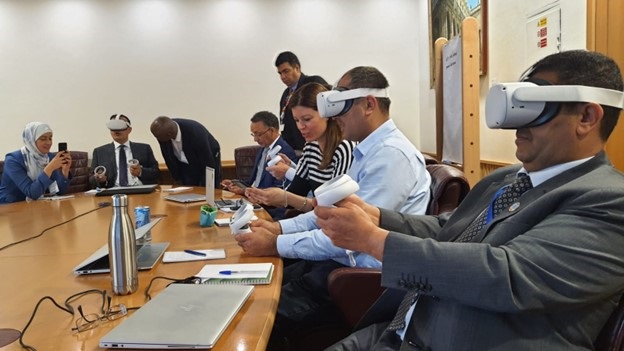
Introducing Virtual Reality technology in locust survey for sustainable locust control and management
08/05/2024
.tmb-th600x400.jpg?Culture=en&sfvrsn=f3760778_1)
FAO delivers a range of specialized equipment to improve locust monitoring in Georgia
11/03/2024
The new equipment were transferred to Kakheti region and tested under field conditions. This is part of the Food and Agriculture Organization of the United Nations (FAO)'s ongoing programme on locust management in the Caucasus and Central Asia implemented with USAID financial assistance. The equipment include four vehicles, entomological kits, binoculars, GPS, tablets, and computers, among others.
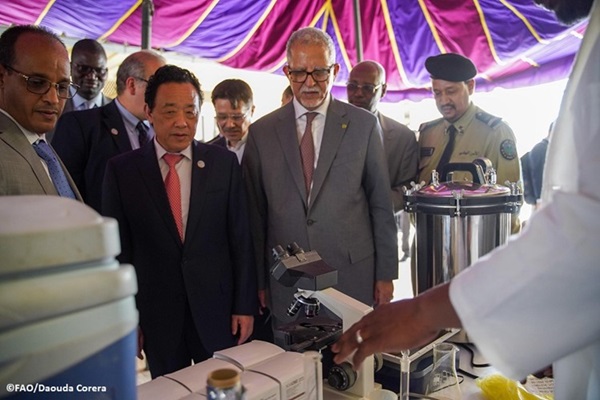
FAO Director-General visits Mauritania's National Centre for Desert Locust Control
16/04/2024
The Director-General of the Food and Agriculture Organization of the United Nations (FAO), QU Dongyu, visited Mauritania's National Centre for Desert Locust Control today as part of a two-day visit to the northwestern African country. The Director-General was accompanied by Mauritania's Minister of Agriculture, His Excellency Umm Ould Bibateh, who underscored the importance of the visit in opening up promising horizons in the longstanding cooperation between Mauritania and FAO.

Desert Locust: Managing the Pest and Protecting People and the Environment
26/03/2024
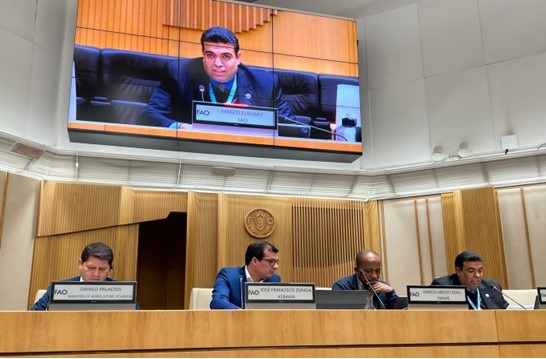
Fusarium Wilt TR4: Prevention is the key to keep the disease at bay in bananas, experts advise
15/03/2024
Experts at the Food and Agriculture Organization of the United Nations (FAO) have called on countries to invest in prevention measures against the Banana Fusarium Wilt caused by Tropical Race 4 (TR4) as it is key to control and delay the spread of the disease into new areas.

Scaling up training in drone use in desert locust survey and surveillance in the Central Region
11/03/2024
Lack of appropriate locust monitoring and preparedness has been identified as major constraints that affect desert locust management. Other challenges include inaccessibility of some regions by vehicles or field officers due to lack of roads, difficult terrains, and insecurity.
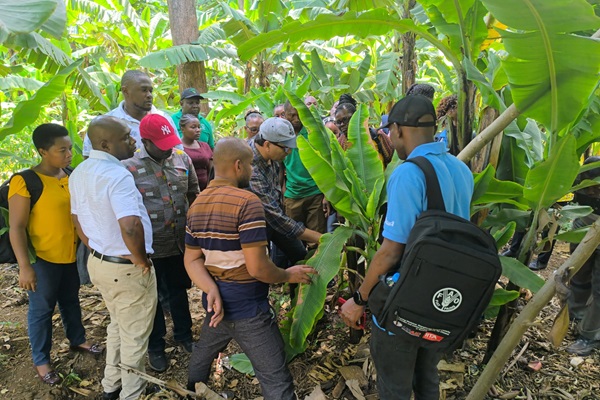
Putting the brakes on spread of Banana Bunchy Top disease threatening banana production in Tanzania
11/03/2024
Banana cultivation in Tanzania is being threatened by the presence of the banana bunchy top disease (BBTD) first detected in 2020 in Kigoma region. The disease is widespread in susceptible cultivars in eleven major banana-growing regions: Arusha, Dar es Salaam, Dodoma, Geita, Katavi, Kigoma, Kilimanjaro, Mbeya, Morogoro, Mwanza, and Pwani.
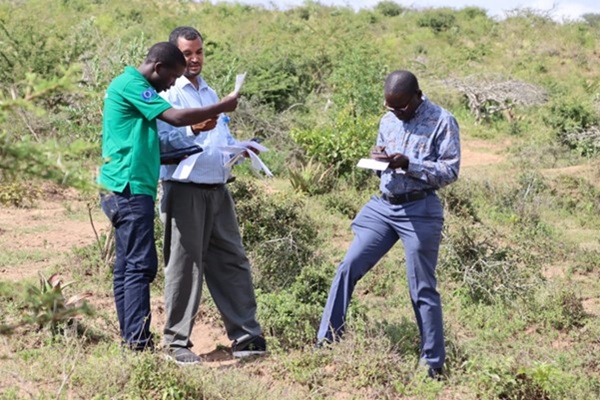
FAO intensifies training of trainers in desert locust survey and reporting for locust officers in the Central Region
03/01/2024
The Food and Agriculture Organization of the United Nations (FAO) conducted intensive training in desert locust survey and reporting for locust officers from Sudan, Uganda, and Ethiopia. This training was a follow up of a regional Training of Trainers course on desert locust survey and reporting techniques held last year.
